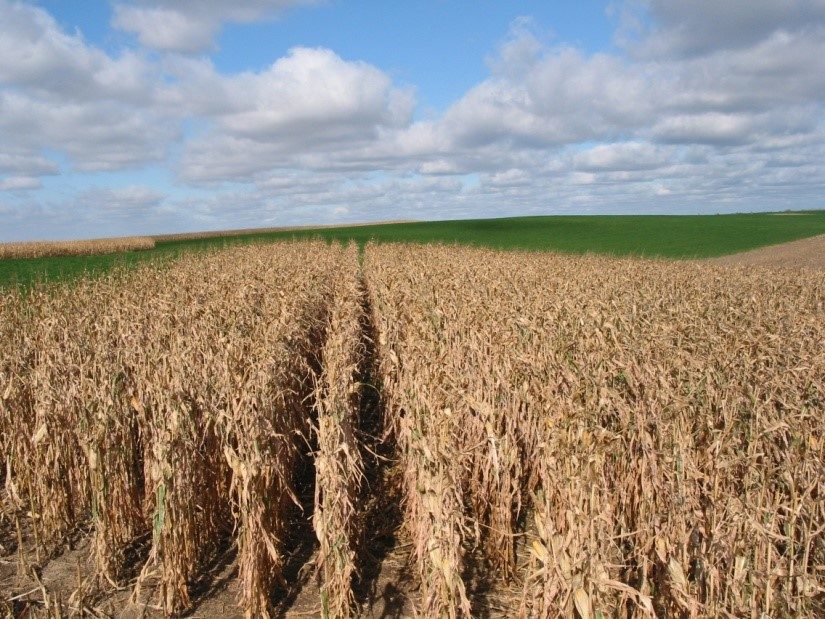By Jeff Coulter, Extension Corn Agronomist
There are many benefits to corn when it is planted after alfalfa, including greater yield, reduced nitrogen (N) requirement from fertilizer or manure, and reduced pest pressure compared to when corn is planted after other crops. In long-term trials in Wisconsin and Iowa, grain yield of first-year corn following alfalfa was as much as 8% higher than that of corn following soybean, and 9 to 18% higher than that of continuous corn. In these trials, the rotation effect also carried over to second-year corn following alfalfa, which yielded 6 to 8% more than continuous corn. However, successful termination of alfalfa is necessary to fully achieve its rotational benefits and avoid competition with corn for water and N.
Benefits of Fall Termination
Shorter rotations, where alfalfa is rotated after three to five years (including the establishment year), have been found to be most profitable in Wisconsin, Manitoba, and western Canada. When using a planned rotation, farmers are faced with deciding whether to terminate alfalfa in the fall or spring. When compared to spring termination of alfalfa, fall termination results in earlier decomposition of alfalfa residue and potential for earlier N release during the next growing season. As a result, N fertilizer rate guidelines for first-year corn following alfalfa on medium-textured (loamy) soils and fine-textured (clayey) soils are slightly lower when alfalfa termination occurs in the fall rather than the spring. Terminating alfalfa in the fall can also facilitate earlier drying and warming of soil in the spring, enabling earlier corn planting. Fall termination also reduces field operations in the spring. However, fall termination of alfalfa can result in less cover to protect against soil erosion during the winter, and does not provide farmers with the option of assessing the stand to determine whether alfalfa could be productive for another year.
Alfalfa can be terminated using tillage, herbicides, or a combination of both. Tillage implements such as a chisel plow with overlapping sweeps or moldboard plow, which completely cut off all alfalfa roots, are effective at terminating alfalfa, but may not be suitable for all fields due to concerns about soil erosion. Tillage implements that do not completely cut off all alfalfa roots will be unable to provide complete alfalfa termination unless herbicide is applied before tillage.
Fall herbicide applications to terminate alfalfa should occur before the first killing freeze (28 degrees Fahrenheit or lower for a few hours) when alfalfa regrowth since the last harvest is at least 4 to 6 inches, otherwise there may be poor herbicide translocation to roots.
If fall tillage is desired after an herbicide application for alfalfa termination, tillage can generally begin within three to four days following herbicide application, but some labels require a longer interval before tillage.
A highly effective herbicide option for fall termination of alfalfa is 2,4-D amine or ester alone or tank-mixed with a dicamba product. If grasses are present with alfalfa, a good option is to tank-mix glyphosate with 2,4-D. High rates of glyphosate alone for alfalfa termination often result in only partial kill (60 to 90% kill with fall applications, or 40 to 80% kill with spring applications).
More details are available in Managing the Rotation from Alfalfa to Corn.
More educational resources on corn production are available at Extension's Corn Production website.







Post a comment
Report Abusive Comment